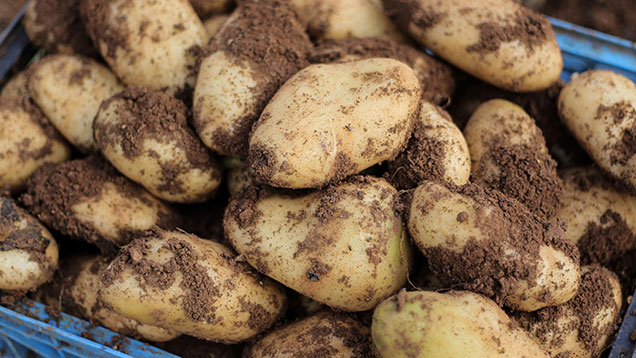More cash to promote potato health benefits
 © APAImages/REX
© APAImages/REX
Potato Council is to put more research cash into health, nutrition and taste projects to support its marketing effort.
About £1.4m of the organisation’s £6m budget is spent on research and innovation (R&I) and the same amount on marketing.
In the plan for R&I from 2015 to 2020, the proportion spent on studies to support promotional material rises from 10% to 25%.
See also: How to improve energy in potato stores
This could fund research which would in turn provide the basis for a marketing push on the health and nutrition benefits of potatoes.
Against a background of falling consumption and rock bottom prices for fresh potatoes, growers met in Edinburgh on Monday (16 March) to discuss priorities and direction for the sector.
Spud facts
- Potato Council 2015-2020 budget – £6m
- Marketing spend £1.4m
- R&I spend £1.4m
- November 2014 stocks were 3.5m tonnes compared with 3.3m tonnes to same date in 2013
- Ample EU supplies – are compromising export potential
- Late grazing and cheap feed mean compromised stock feed potential
- Consumption of fresh potatoes down from average of 1.9kg a person a week in 1942 to 439g a week in 2013
- Price is not a key driver of demand for potatoes – potato promotions are about half as successful as other food promotions
Potato Council’s remit is to make the sector more competitive and sustainable. Halting the long-term decline in the purchase and consumption of fresh potatoes was not a short-term job, growers were told.
In 1942, average consumption of fresh potatoes was 1.9kg a person a week, but by 2013 had fallen to just 439g a week.
Grower concerns
Prices are low and stocks are high. Seed growers said order books were thin and they didn’t know whether cashflow was holding orders back or whether the slow trade was because their customers were changing cropping plans.
Potato Council director Rob Clayton told growers the board wanted to hear how they thought its budget should be spent but the audience was warned that the £1.4m marketing budget would buy very little TV time.
Cupar grower Ken Lang said this could be a once in a generation opportunity to arrest the decline in consumption through heavy promotion. “I think we’re at a stage where a lot of growers think we need to chuck all of our [Potato Council] money at it,” he said.
If that was to happen then it would be a question of deciding how to re-allocate funds from other activities, said Mr Clayton. Some of the budget had to stay with plant health, otherwise there was a risk of market failure in that area.
Mr Lang thought a radical look at R&I was needed and questioned how much of it was really implemented at a practical level.
Head of knowledge transfer and communications Dr Philip Burgess said processing growers needed support to drive production efficiency so they could compete with imports.
Producers like Jim Cargill also wanted more information on the relationship between farmgate and retail prices, which many agreed were still far too high.
The Potato Council had tried to establish costs of production but the variation had been so wide that it was felt the figures would not help the growers’ cause, said Dr Clayton.
Working with retailers had proved challenging – the Potato Council’s initiative to simplify choices for consumers by classifying potatoes into fluffy, smooth and salad met with limited success because each retailer wanted its own point of difference, rather than to embrace an over-arching scheme.
Mr White cautioned against pushing down the retail price as this risked ripping huge value out of the market, he said.
